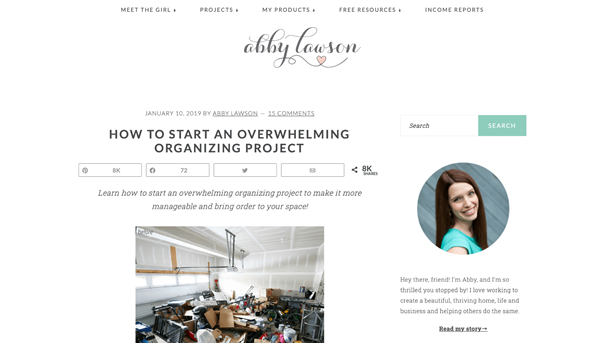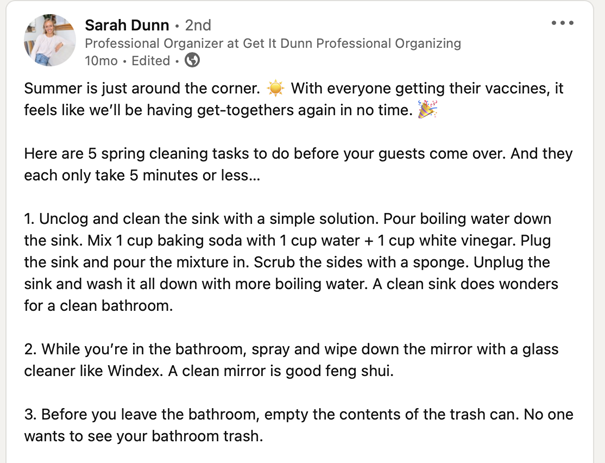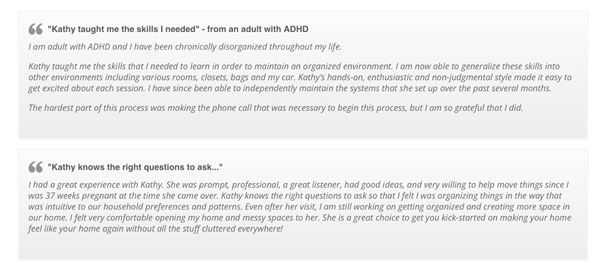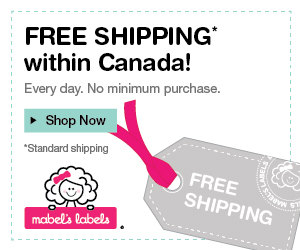9 Content Ideas for Every Customer Journey Stage
This page may contain links to Amazon.com or other sites from which I may receive commission on purchases you make after clicking on such links. Read my full Disclosure Policy

Do you blog because you enjoy it, or because you consider it a necessary evil, part of marketing your business? Either way, you’ll get more out of your efforts if you have a strategy in place. For that reason, I asked growth marketing strategist, Margo Ovsiienko to explain how to create a customer journey map so you can get better results from your blog.

Have you ever thought of implementing a strategy for writing content instead of just coming up with random ideas for blog or social media posts? If you have some doubts about answering the question, you are not alone.
Most organizers who don’t have a solid background in content strategy and writing don’t know the best way to approach content planning. However, without a solid plan, you can’t get your content to attract people to your website and land more sales.
In this article, we want to change that and show you the way to structure your content marketing effort more effectively. As a result, by sticking to these recommendations, you can finally make content bring sales. Let’s make the first step to success and analyze your customer journey.
What is a customer journey map?
The customer journey map shows all touchpoints your customers have with your brand during the whole course of relationships with your business. Visiting your website, calling your office, receiving an email newsletter are the touchpoints your customers can have with your organizer business.
If you were to draw this map as a visual representation, it would look like this.

So how is this knowledge useful for your organizer business? How can it bring you more clients, money, recognition, and, finally, satisfaction from work?
The process is a secret to your success. To get the answer to the question we have asked above, you first have to understand how customer journey maps work and how you can create content around it to achieve your organizer’s business goals.
How to plan content for every stage of your customer journey map
On a customer journey map, there are five main stages representing a sales funnel – awareness, consideration, purchase, retention, and advocacy. Those are the stages your customers go through before they become your (loyal) clients.
For every stage of the funnel, you should create different content as your prospects have different needs at each stage. If you have already created some content, you should review it and check if it is aligned with your customer journey map.
It can be the case that you have been covering content for just one sales funnel stage and neglected the rest. Once you have discovered content gaps, you can start working on optimizing your funnel and creating more content for other stages.
Let’s finish with the theory part. It’s time to see some content ideas in action and work out a way to introduce them in your content plan.
Awareness stage
At the awareness stage, your potential customers might or might not realize a challenge they face. For example, at some point, they can understand there is just too much clutter in their garage or an unorganized office and decide to fix it.
However, at this stage they most likely don’t know about the existence of professional organizers and that they can seek professional help.
As these people start researching solutions, they are likely to look for educational content on how to organize space. They will then go to Google and type their query.
At this stage, educate your customers on how their problems or challenges can be resolved. For example, you could share some tips on decluttering office spaces.
Now, you’d ask, “What medium is the best to share those tips?”
You have quite a few at your disposal!
1. Articles
Write SEO-optimized articles that answer the main questions people type on Google related to their challenge on decluttering or organizing space. Make your articles actionable – include bullet points and listicles with tips people can introduce straight away. Check out this example below to get an idea of it.

2. Infographics
You don’t have to create content from scratch if you have decided to make some infographics. Use your existing materials such as blog articles, recordings, or notes to start working on visual content. Check out this example of the infographic below that can inspire your infographic idea.

3. Social media content
If you have just written an interesting in-depth post on cleaning an apartment, recycle this content. Make it shorter and more actionable. Use bullet points or listicles as in the example below. The idea is to deliver some value to your target audience and create a message that sticks.
Before you start creating social media posts, read a bit more about creating a social media strategy for a small business like yours.

Apart from creating social media content all by yourself, consider using user-generated content. Get your customers to share some ideas that you have taught them about organizing space and mention you have helped them bring those healthy habits into life. If you choose this tactic, don’t forget about moderating content that people want to post about your business.
4. Ebooks
Create an ebook based on your previous blog posts around some topic or write it from scratch if you don’t have any good material up your sleeve.
Some organizers would go for gated content, meaning they would make an ebook available to users who leave their contact details such as email and phone number. On one hand, placing an opt-in form can help you collect the contact details of potential customers.
On the other hand, people find this practice increasingly annoying. That’s one of the reasons why you can also consider publishing an ebook as one long piece of ungated content. Remember that it’s also good for your SEO!
Consideration (evaluation) stage
At the consideration stage, your potential clients know they need to work with an organizer, but are not sure which one to choose. To help them make a decision, showcase the experience and share the results of your work. There are a few ways you can do it through content.
5. Case studies
Case studies are one of the best tools to build trust with future customers by showing the way you have solved similar problems in the past. When writing a case study stick to this outline:
- Introduction – explain the task you had to deal with
- Challenges – write about specific challenges your clients have faced (e.g. decluttering their attic within three days)
- Process – explain the whole process of cooperation starting with a phone call and finishing on handing over the project.
- Solutions – explain how you have solved a challenge (some particular organizer technique that you have applied)
- Summary – summarize goals that you have managed to achieve for a client.
You can also consider including some before and after photos of a site as it will help your clients understand what outcome they can expect if they decide to work with you. Check this example showing this idea.

6. Email marketing
Consider writing regular newsletters and segment your main subscribers into two lists – your clientele and leads that need to be nurtured. You may want to send different content to both groups. When writing email newsletters, consider adding personalization.
Email marketing tools have advanced personalization options that you might not even know about – just take a look at typical eCommerce personalization examples and the variety of personalization options companies can use these days.
Purchase stage
At the purchase stage, you should provide some evidence on how you have helped your clients solve their challenges and give prospects a final push to start cooperation with you.
7. Customer testimonials
Ask your previous clients to write a review for you on Google or send it over to you via email. If they decide to send it by email, ask for permission to use their content on your website.

8. Free consultation
To make it easy for prospects to make the first step towards cooperation, consider offering a free phone or Zoom consultation. During this consultation, you can understand the challenges and needs of your potential client and sell your services as a solution.
9. FAQ pages
Have you noticed that clients usually have similar objections or ask similar questions before they sign a contract with you? To make it easier for your future clients, approach your FAQ page as a small knowledge base where you list questions you anticipate from potential customers and answer them in a way that prevents misunderstanding and overcomes objections, just like in the example below.

Loyalty stage
Once you have managed to establish an effective funnel that converts website visitors into paying customers, don’t stop there. Remember that you can also sell more to your clients and work on increasing your average customer lifetime value.
Customer lifetime value is a term describing the value of a customer to your organizer business across the whole course of relationships with that customer.
You can engage your current client base to work again on a project by providing continuous support even after you have finished cooperation. Provide support through messages on Facebook, Instagram, or email. Consider asking what other challenges customers have now when organizing their space. Perhaps, you can even inspire your clients to work on another area of their home or office.
Consider sending your customers NPS score surveys to check how likely they are to recommend your services to their friends.
Summary
Instead of publishing random content, map it out according to the main stages in your customer purchasing cycle. By tailoring content that works the best for each stage in your sales funnel, it can become a more effective tool that helps generate sales for your organizer business. Now, it’s time to make notes and map out your content strategy!
Photo © Janet Barclay











I’m doing well on some of these but certainly have “room for growth” on others. I love making infographics, but my issue is that one format doesn’t share well across multiple platforms. For instance, an infographic can get cropped on some sites. I don’t want to create the graphic in 4 formats, so I’ve started moving away from them, even though they look great on my blog itself.
Thanks for sharing about all of these stage of the journey and how to best meet clients needs and wants along the way!
With Snappa it’s fairly easy to create a graphic and convert it to other sizes, but I can see that it would be a lot more work with an infographic due to the number of graphics and text boxes that would probably need to be adjusted and/or moved around.
These are excellent examples for keeping your potential clients and clients engaged through the “journey.” Like Seana, many of these I’m doing, but I’ve not thought about them in the context you presented. It will be interesting to make that connection and look into making improvements.
You’re very clever, so I will watch your blog to see if and how this strategy sneaks its way in!
This post is comprehensive. Thank you for sharing these steps and tips during the customer journey.
I am at the hit or miss stage of creating content. I think this article is telling us to write 7 different kinds of content with one type per blog. And plan our content through these 7 stages. What if you wrote a blog and each paragraph had an emphasis for one of the stages. Each blog would have all the stages in it and each reader would be drawn to the paragraph as relates to them and their journey. What do you think?
I’m not sure what Margo would say, but I think each piece will be more powerful if it’s geared to a specific phase of the journey.
This is excellent *content* to explain the development of content. I know I’m accomplishing some of these elements better than others (and a few, not at all — infographics, I’m looking at you!). Thank you for providing such a thorough look at our options.